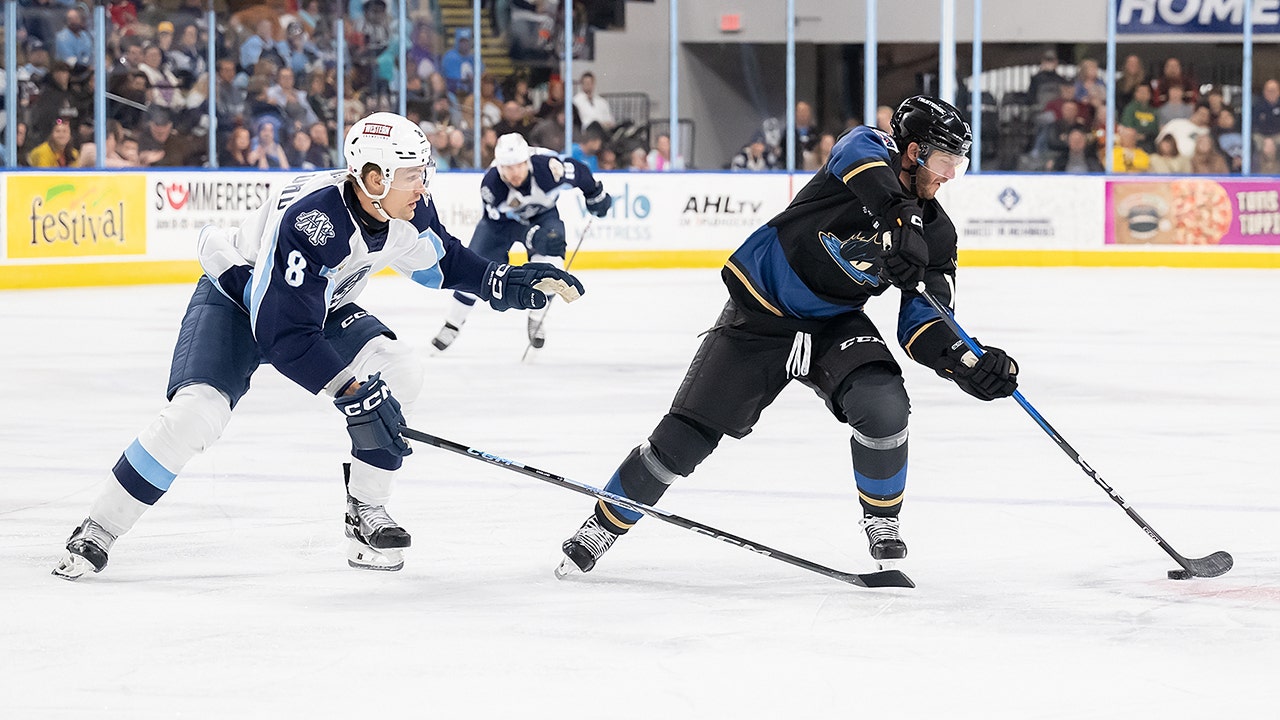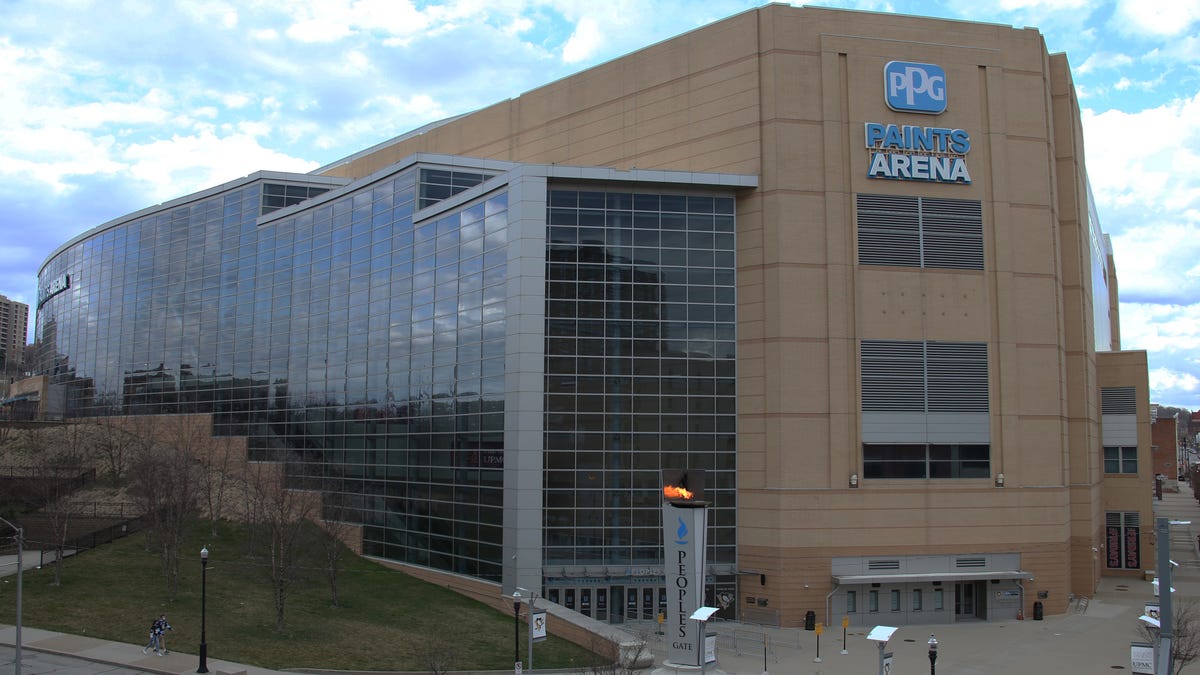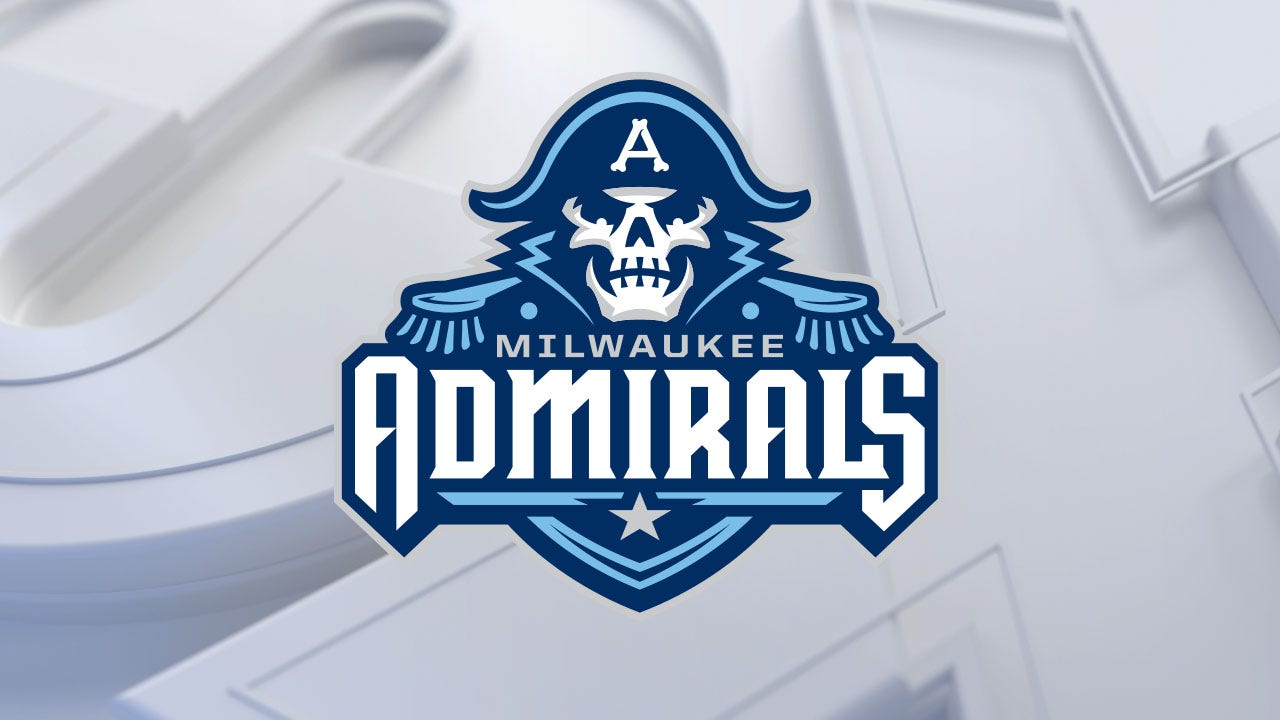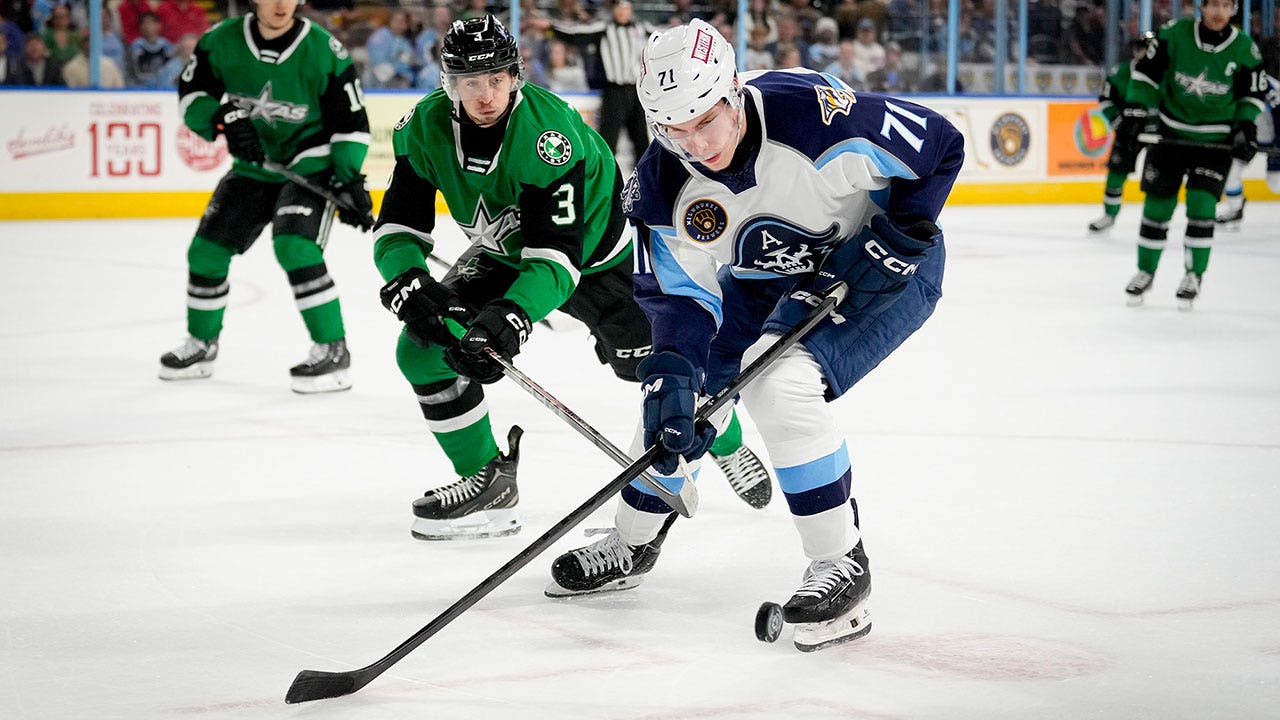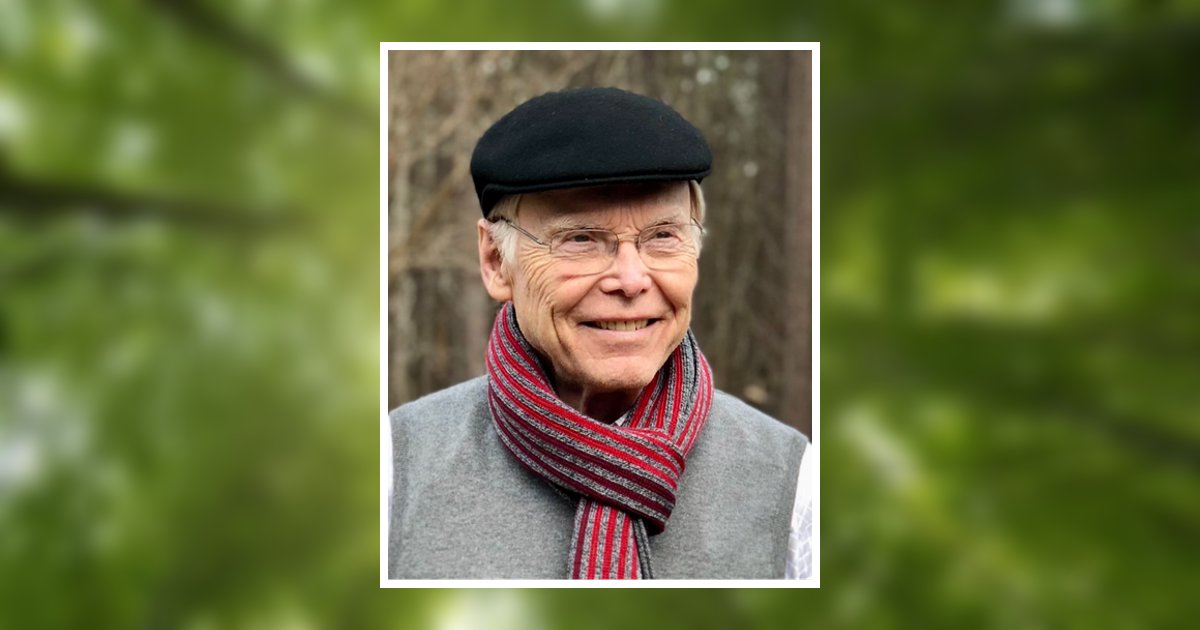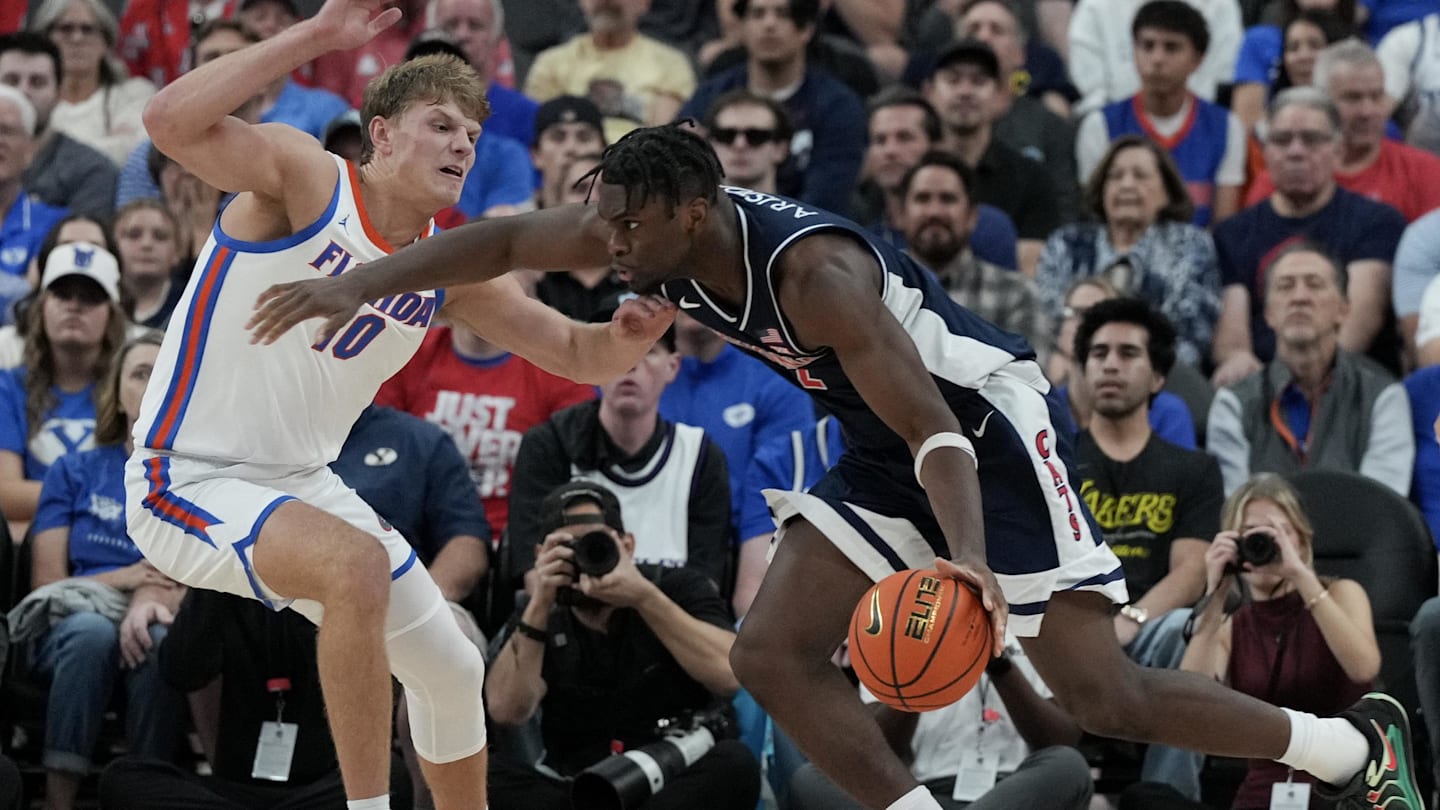Sports
The remote Swedish town that produced a generational NHL talent

LANDSBRO, Sweden – There are no signs for Landsbro on the long road from Stockholm.
This village in southern Sweden is so remote, so small, I was told, I would pass it if I didn’t keep my head up.
Not a single stop sign. Not a single red light. Small like that.
I was told to take the train from Stockholm if I planned to visit, but, I was cautioned, no train stopped in Landsbro. I would need a rental car to make the last leg of the journey. Why not drive the full four and a half hours instead, I thought? What better way to get a sense for how far out this place really was than by coasting southwest from the largest city in Sweden, with a population of 1.5 million, a place that hums with people and activity, to this quaint village of 1,500 people?
Trees practically swallowed the road as I zipped past farms and vast empty spaces, heading in the direction of nearby Vetlanda. It wasn’t until I was just outside of town that I came across any hint of Landsbro. There wasn’t a soul in sight as I passed a big white church, the only gas station around, and a barbershop that accepted walk-ins. Finally, after more than 200 miles, I came upon the place where the seeds for a historic NHL career were planted — though you would hardly know it.
Nothing but the GPS told me I was in the right place.
Not until, that is, I pulled into the parking lot of the hockey arena. Scrawled in white paint out front were two reserved spaces for local royalty: One for the No. 93 of Johan Franzén, the first player to make it to the NHL from these parts. The other features the No. 65 of Erik Karlsson, one of the greatest players of his generation, a three-time Norris Trophy winner, 15 seasons, 966 games, 795 points, and one of the best Swedes, period, to play in the NHL.
The snow was starting to fall and darkness was creeping in as I waited for Erik’s younger brother, Pelle, to arrive and show me around. I had only one thought: How the heck did Karlsson make it all the way from here?
It didn’t take me long to figure it out.
This place — just two square kilometers — was tiny.
There’s the pizza joint, Pizzeria Adonis, where the Karlssons still get their pies and which has been run by the same people for the last three decades. There’s the grocery store, the ICA, which closes at 8 every night of the week. Erik still recognizes the workers from when he was a boy.
There’s a restaurant, Bykrogen, right next to the ICA, which closed after lunch.
There was a bank when Erik was very young, but “it’s long gone now,” he says.
“And at one point we did actually have a small café, too,” Erik tells me. “That didn’t last very long.”
There’s the school, Landsbro Skola, which sits on the main road that winds its way through town, amid the dozens of cozy little bungalows. The school is attached to the arena. The soccer field, where Erik spent most of his time from April to September, sits just down the way.
Around the corner from there, the lake where Erik, his buddies, and Pelle, would swim on long summer days, where they would nervously stand atop platforms in the water and pelt each other with tennis balls. To grow up in Landsbro was to be active. Swimming, hockey (indoors and outdoors), tennis, soccer, cross-country skiing. “It was never just one thing,” Erik says, adding that as a child of the ’90s, “TV wasn’t really a thing.”
“I think back then, you gave us a ball and a stick or something and we could play with that for weeks because there wasn’t much else,” Erik says. “We didn’t have many toys. We didn’t have a toy store or anything like that.”
It was all they knew.
“It’s not like we were completely isolated,” Erik says, “but we didn’t really have anything (else) and obviously when you were younger you couldn’t really go anywhere on your own until you got a driver’s license. You were kinda confined to where you were.”
Still, the possibilities felt endless as did the freedom.
This was small-town Sweden. Nobody locked their doors. Keys were left in cars. Kids were free to walk to school with no supervision. All of Erik’s friends lived just around the corner.
Everyone knew everyone in Landsbro, so Erik was free to stay out late, especially in the summer, when the sun hangs into the sky well into the night.
“It just felt like whatever you wanted to do,” Erik says, “you could do.”
The school that helped shape Erik Karlsson’s early years. (Jonas Siegel / The Athletic)
Erik was born on the last day of May in 1990. The population in Landsbro that year was just over 1,600.
That meant no crowds anywhere, ever.
The arena, with roots in the community that stretch back more than 50 years, was almost always begging for action. Erik, his pals, and his brother were free to pop over for shinny just about any time they liked.
The arena workers encouraged it. They would even flood the ice afterward.
And because the arena was attached to the school, Erik and his buddies often zipped over with an hour between classes. Their gear was always waiting for them in wooden storage lockers in the arena’s underbelly.
The boys would be back to skate some more when school let out. They would return again on weekends when the ice was free. Erik’s parents would often stop by with snacks. It was the kind of formative hockey experience that just wasn’t possible in a bigger place. Erik could get on the ice for upwards of 10 hours a week, some of that time structured through the various teams he played on, much of it not.
“It was always open doors,” Erik said.
There was no better place to be — nowhere else really to be — from October until March when the days are crushingly short, the “bad time” they call it.
The seeds of that rink, where Erik Karlsson’s journey began, were laid in 1969. It was a wholly local effort, Pelle tells me as we sit and chat in an employee kitchen where jerseys and life-size pictures of Karlsson and Franzén line the walls. The locals, Pelle explains, assembled the arena piece by piece with wood donated from the nearby lumber mill where Erik’s dad, Jonas, would later work driving a forklift.
They built it on nights and weekends. Spouses would stop by with home-cooked meals.
“Most of the rinks in Sweden are made of concrete and steel. They’re so much colder,” Pelle says. “This is kinda warm because it’s made out of wood.”
It’s still stunning all these years later, almost like a gigantic log cabin with ice in the middle.
Hanging up top are two banners: One marking Franzén’s 2008 Stanley Cup with the Detroit Red Wings, the other bearing an especially large No. 65 for Erik.
Pelle looks almost exactly like Erik and was even mistaken for his brother during a visit to Pittsburgh last fall.
If Pelle was the good child, Erik was the troublemaker, the prankster always up to something. Erik was the “black sheep” of the Karlsson family, the one who frequently found himself in the kind of mischief Pelle would only hear later from the other kids.
The famous swagger that would one day define a career that will eventually land him in the Hall of Fame, Erik had that from the start, Pelle says, which is odd, “because our parents are kind of modest and quiet.”
Erik, he says, has “always believed in himself.”
Pelle moved back to Landsbro with his wife and three kids after his playing career came to an end. He led me into the cafeteria, where the wooden walls are dotted with black and white photos of the people who constructed this rink decades ago along with Karlsson-related newspaper clippings from when he starred for the Senators and Team Sweden.
Pelle seems to know everyone working in the arena — still. He played semi-pro for years across Sweden, a defenseman just like his older brother.
These were mostly the same arena workers from when he and Erik were young boys. He led us into the dressing room where Jonas Karlsson once played, the first defenseman in the Karlsson clan, and where Erik and Pelle bopped around as kids.
Jonas retired when the boys were born. A later comeback attempt was thwarted by injury.
“I never really got to see him play, because he retired so he could have us,” Erik says of himself, Pelle, and their younger sister, Mikaela. “But he always brought us around and created the passion, I think, amongst me and my siblings. We lived an active lifestyle, I think, from day one.”

The Karlssons, the early years: From left, Pelle, Mikaela, Erik and their dad, Jonas. (Courtesy Pelle Karlsson)
Pelle chases down one of the arena workers to see if we can pop into the “gymnastics hall.” “Do you know what floorball is?” he asks. It was here, in a gymnasium with wooden ceilings and walls painted lime green, where the boys were free to play floorball (aka floor hockey) whenever they chose.
There were 10, maybe 15 of them. They would stuff a Bandi Ball with plastic bags to weigh it down. Fights were frequent. Nobody was better than Erik.
Hockey was ingrained in the culture of Landsbro and Erik’s extended family: Erik’s uncle, Thomas Nordh, another local legend, was famed for winning the SHL crown. Daniel Ljungkvist, a defenseman who had a long career in Sweden, was married to a cousin. Pelle still plays in the same beer league as Franzén.
Most kids, if they dreamed of a future at all in hockey, dreamed of doing it in the Swedish Hockey League. “But you always knew you probably would end up a carpenter or a forklift guy,” Pelle says.
For Karlsson, hockey was just one love among many. Something he enjoyed in the winter months. It wasn’t a dream of his to reach the NHL.
In fact, for a long while, he thought he might actually pursue a career in soccer. “I was at the level where I had to make a decision,” Erik says. “Either I go down the soccer route or I go down the hockey route. My dad played hockey growing up. My brother played it and he was pretty good at it.
“I think it was just more convenience than anything that I ended up picking hockey instead of soccer.”
Pelle grins when he hears this, Erik becoming a professional footballer. “He says he was better than he was.”
To this day, Erik considers himself “more of an athlete than just a hockey player.”
NHL games were hardly ever on TV, and if they were, they were in the middle of the night. Erik and Pelle knew of the league and its stars almost entirely through video games and, of course, from Franzén, who didn’t make his NHL debut for Detroit until 2005 when Erik was already 15. (Which might explain Erik comparing his game to the hard-hitting Niklas Kronwall on draft day.)
“I didn’t dedicate myself to hockey fully until I was 16, 17,” he says. “Hockey was just my occupation, or what I did, from October to March.
“Once I became a teenager and started learning about the various options in life, there was a period of my time where I wasn’t really sure if hockey was what I wanted to pursue full time. Obviously, I’m lucky and I’m happy that I ended up choosing that path, but at the time, it wasn’t a given.”
Everyone in Landsbro knew Erik was good, including Erik, but they didn’t really know how good. How could they when Erik was competing only locally?
They found out for sure when Erik went out for the Swedish national team at 15. He was small and skinny, but played like no one else, as Victor Hedman, a teammate and future Norris Trophy winner himself, recalls.
“You were in awe of his skill and the way he played the game,” says Hedman, the Tampa Bay Lightning defenseman. “He played the same way back then that he does to this day.”
Erik was “very thin” but man, Hedman says, could he skate, make plays, and shoot the puck. Erik played boldly, even then. All that free time on the rink in Landsbro sowed the seeds for the kind of creativity that would one day lead Karlsson to stack up 101 points in a single NHL season, a number that’s been eclipsed among NHL defensemen by only Bobby Orr, Paul Coffey, Al MacInnis and Brian Leetch.
Hedman remembers Erik as a funny kid with “a lot of tricks up his sleeve.” He was outgoing. He could brighten a room. And when they got on the ice, Erik was unafraid to take risks and make mistakes.
“He trusted his talents and he believed in himself,” Hedman says.
It was that swagger that couldn’t really be explained.
“He has that perfect personality,” Hedman says, “when it comes to playing hockey.”
It’s why, in Hedman’s estimation, Erik was a star almost from the day he entered the NHL with the Ottawa Senators, beating out Nicklas Lidstrom, Shea Weber and Zdeno Chara, among others, for his first Norris Trophy at age 21 in only his third season.
Only Orr has done it younger.

Erik Karlsson, accepting his third Norris Trophy last year in Nashville. (Jason Kempin / Getty Images )
It’s why, as Pelle remembers it, Erik could score an overtime winner in his very first game for Frölunda, and why he always crushes it in the playoffs. (Erik has 34 points in his last 38 playoff games for the Senators and San Jose Sharks.)
Though he hails from northern Sweden, Hedman can tell almost exactly where Erik is from by hearing him speak. “It’s different dialects in Sweden too,” Hedman says.
Hedman had somehow heard of tiny Landsbro, but never visited. Of his hometown, Erik told him simply, “That it’s small, very small.”
Which made it all the more special that day when Erik was officially welcomed into the NHL in June 2008.
The Karlssons hosted a house party in celebration. It just happened to be the midsummer holiday, which commemorates the longest day of the year. In other words, two celebrations in one.
They pulled up a livestream that night and crowded around the computer to watch as fellow Swede and Senators’ captain Daniel Alfredsson announced to the crowd in Ottawa that Erik — all 157 pounds of him — was the pick at 15th overall.
“We had no idea who would pick him,” Pelle says.
It was a big deal wherever he went.
“The whole Landsbro, everyone roots for him,” Pelle says. “Obviously Johan, he kinda paved the way. And so everyone followed his journey and then Erik came. It obviously was huge.”
Unlike Pelle, Erik isn’t moving back to Landsbro.
He tries to make it home once every year to see his brother, see his parents, see everything just the way he left it. “It’s easy to come back home and walk in the grocery store and it’s the same family running it, the same people there,” Erik says. “Everybody’s just a little bit older.”
Landsbro felt almost sealed in time that way. The Landsbro I visited almost identical to the Landsbro that made Erik Karlsson.
Erik Karlsson was no longer here. But this was still home for him.
“He’s proud of where he’s from,” says Hedman. “Home is always home. You’re always proud of where you come from.”
I could feel that when Pelle finally led me out of the arena and back into the cold. It was 5:30, fully dark, and entirely quiet. How did Erik Karlsson make it from here? Driving back to Stockholm, I felt like I knew.
(Illustration: Sean Reilly / The Athletic. Photos: Joe Sargent / NHLI via Getty Images, Jonas Siegel / The Athletic, Courtesy Pelle Eriksson)

Sports
Cardinals snap 5-game skid with road win over struggling Cowboys

NEWYou can now listen to Fox News articles!
The Arizona Cardinals have finally snapped their five-game losing streak, doing so in convincing fashion with a 27-17 victory over the Dallas Cowboys.
The Cardinals, who started 2-0, are now 3-5, while the Cowboys – blown out by the Denver Broncos last week – fell to 3-5-1 heading into their bye week.
All eyes were on the Cowboys entering this game after that brutal loss at Mile High, but the Cardinals also came into this game desperately needing a win to not only get the vibes high in the locker room again but keep the season afloat.
It was Jacoby Brissett once again starting for Arizona, as Kyler Murray remains out with his toe injury. Brissett, though, was the man for the job from the jump, and Marvin Harrison Jr. was his right-hand man.
Marvin Harrison Jr. of the Arizona Cardinals celebrates his touchdown with Elijah Higgins against the Dallas Cowboys during the second quarter in the game at AT&T Stadium on Nov. 3, 2025 in Arlington, Texas. (Stacy Revere/Getty Images)
The second-year receiver had a fantastic night, tallying seven catches and 96 yards in the first half with the game’s first touchdown on a beautiful release that left cornerback Da’Ron Bland flat-footed.
However, Dak Prescott and the Cowboys’ offense – averaging over 30 points per game this season – couldn’t find a rhythm against the Cardinals’ defense. They turned it over on downs on their opening drive and came away empty-handed.
After a Cowboys punt, Harrison’s touchdown made it 10-0, and tight end Jake Ferguson’s fumble in Arizona territory killed another promising Dallas drive. But the Cowboys’ special teams answered when Sam Williams blocked a punt that ricocheted off his helmet and rolled into the end zone, where Marshawn Kneeland recovered it for a touchdown.
TONY ROMO’S AWKWARD NOISES DURING NFL BROADCAST DRAWS CRITICISM
Brissett and the Cardinals responded immediately, marching 74 yards in 11 plays before Brissett snuck one across at the goal line.
When the third quarter began, Michael Wilson immediately put the Cardinals in plus territory as he caught a ball from Brissett and ran 50 yards to Dallas’ 24-yard line. A few plays later, tight end Trey McBride made it 24-7 with a nice snag on the right side of the colored paint.

Jacoby Brissett of the Arizona Cardinals on the line of scrimmage against the Dallas Cowboys during the second quarter in the game at AT&T Stadium on Nov. 3, 2025 in Arlington, Texas. (Stacy Revere/Getty Images)
Dallas added a field goal, then Prescott connected with Ryan Flournoy for a short touchdown to cut the deficit to 10. Given how Arizona’s recent losses came down to one score, this one still felt far from over.
Dallas got another stop on defense, but it was the Cardinals’ defense that came away with a massive play during the ensuing drive. Prescott was blitzed and threw the ball immediately to running back Javonte Williams, who wasn’t ready for a Cardinals defender to hit him right away. During the tackle, the ball was ripped out of Williams’ arm and Akeem David-Gaither recovered it before it went out of bounds.
That play came with 4:46 left in the game, and just when it seemed like there was a chance for another epic collapse, Arizona finally came through with the play they needed.
In the box score, Brissett was 21-of-31 for 261 yards with two touchdown passes despite getting sacked five times by the Cowboys. McBride finished with five catches for 55 yards, while Emari Demercado led the way on the ground with 79 yards on 14 carries.

Jacoby Brissett of the Arizona Cardinals throws against the Dallas Cowboys during the first quarter in the game at AT&T Stadium on Nov. 03, 2025 in Arlington, Texas. (Sam Hodde/Getty Images)
For Dallas, Javonte Williams totaled 83 yards on 15 carries, but turnovers doomed the offense. Prescott went 24-for-39 for 250 yards with one touchdown and one interception, the latter coming on the Cowboys’ final drive.
CeeDee Lamb finished with 85 yards on seven catches, while George Pickens added six receptions for 79 yards.
Follow Fox News Digital’s sports coverage on X and subscribe to the Fox News Sports Huddle newsletter.
Sports
High school girls’ tennis: City Section playoff results

CITY SECTION PLAYOFFS
MONDAY’S RESULTS
Semifinals
DIVISION I
#5 GALA 21.5, #1 LA Marshall 8
#3 North Hollywood 15.5, #2 Chatsworth 14
DIVISION II
#1 Granada Hills Kennedy 17.5, #4 Bell 10
#2 Carson 20.5, Gardena 9
Note: Division II Finals Nov. 5 at 11 a.m. at Balboa Sports Center; Division I Finals Nov. 6 at 11 a.m. at Balboa Sports Center.
Sports
Women’s pro soccer player faces teammates’ rebuke after calling on league to adopt clear gender standards
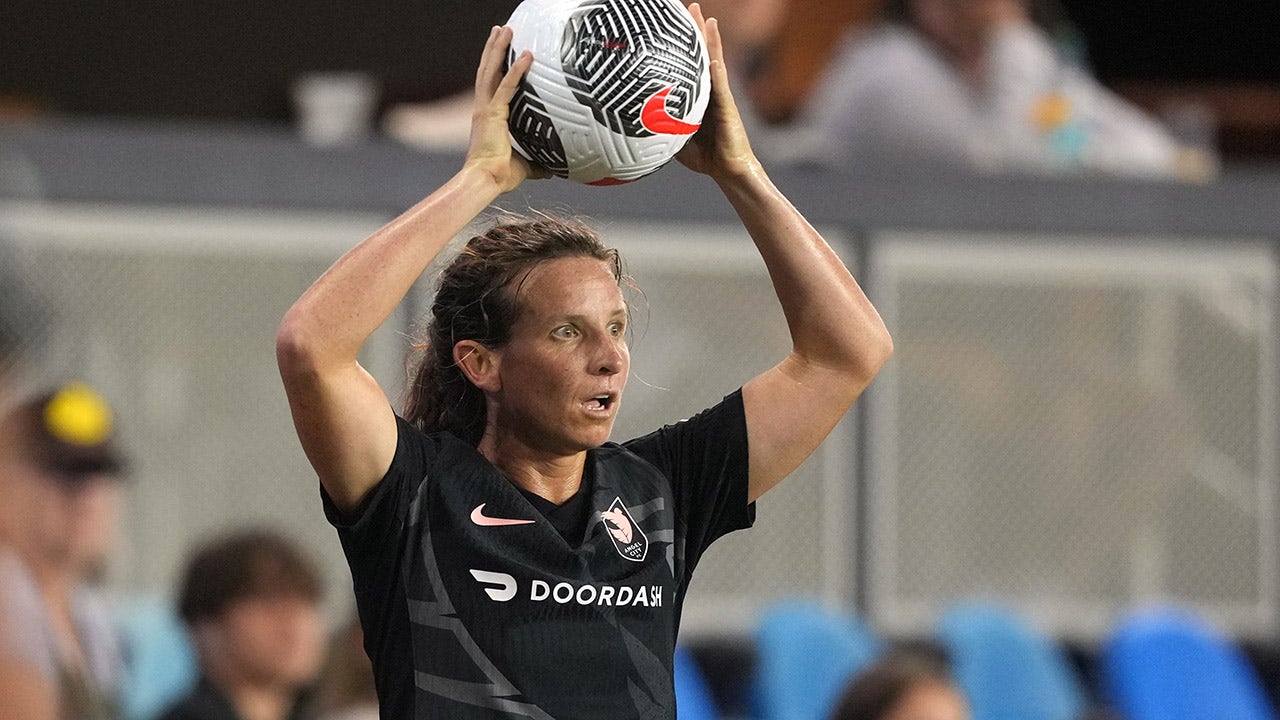
NEWYou can now listen to Fox News articles!
A National Women’s Soccer League club has grown divided after one of its players called on the league to “adopt gender standards” to protect the integrity of the organization and grow the sport.
Elizabeth Eddy’s column appeared in the New York Post last week and she asked, “How do we preserve women’s rights and competitive fairness while fostering meaningful inclusion?”
Angel City FC defender Elizabeth Eddy (44) during the second half against Bay FC at PayPal Park on July 26, 2024. (Darren Yamashita/USA TODAY Sports)
Eddy wrote that controversies in swimming and track and field have shed light that women’s professional soccer lacks standards when it comes to intersex and transgender athletes. She wrote that the NWSL “must adopt a clear standard,” adding that only players born with ovaries should be allowed to play, following the standard in the Women’s Super League in the United Kingdom, or the league should adopt an SRY gene test, like World Athletics and World Boxing.
“Fairness and inclusion are core American values. Reasonable people can disagree about where to draw lines, but avoiding the conversation altogether by shutting out diverse views does not serve us. In fact, we owe it to current and future female athletes to solve this,” the 11-year veteran wrote.
But Eddy’s column didn’t sit well with her own teammates.
Sarah Gorden and Angelina Anderson both offered a scathing rebuke of Eddy.
US OLYMPIAN OPENS UP ON LEADING LAWSUIT AGAINST GOVERNING BODY OVER TRANS ATHLETES IN WOMEN’S COMPETITION

Angel City FC defender Sarah Gorden (11) kicks the ball against Chicago Stars during the first half of a match at SeatGeek Stadium on Nov. 2, 2025. (Melissa Tamez/Imagn Images)
“That article does not speak for this team in this locker room. I’ve had a lot of (conversations) with my teammates in the past few days and they are hurt and they are harmed by the article, and also, they are disgusted by some of the things that were said in the article and it’s really important for me to say that,” Gorden said on Friday.
“We don’t agree with the things written for a plethora of reasons, but mostly the undertones come across as transphobic and racist as well. The article calls for genetic testing on certain players and it has a photo of an African player as a headline. That’s very harmful, and to me, it’s inherently racist because to single out this community based on them looking or being different is absolutely a problem. As a mixed woman, with a Black family, I’m devastated by the undertones of this article.
Anderson talked about what she believed the club stood for.
“For me personally when I think of LA, and I think of Angel City, I think of a place that was founded upon inclusivity and love for all people – that’s what our locker room is, that what our staff is, that’s what our fan base is. Angel City is a place for everyone. It always will be. That’s how it was from the beginning, that’s how it will always be. Period,” she said.

Angel City FC goalkeeper Angelina Anderson (19) watches the play during the first half against Racing Louisville FC at Lynn Family Stadium on Sept. 27, 2025. (EM Dash/Imagn Images)
CLICK HERE TO DOWNLOAD THE FOX NEWS APP
“I think this situation, there’s an element of timing to it where this feels like another really big challenge that we have to go through as a team on top of an already really challenging year. And it’s definitely not the note that we as a group want to end on, and so I just want everyone to know that we’re doing our best in the locker room to preserve respect and belonging on this team and we look forward to ending the season on as positive of a note as possible.”
The NWSL reacted to Eddy’s column, too. The league told The Athletic it was “committed to working directly with the NWSL Players Association on any changes to our league policies.”
Follow Fox News Digital’s sports coverage on X and subscribe to the Fox News Sports Huddle newsletter.
-

 Milwaukee, WI7 days ago
Milwaukee, WI7 days agoLongtime anchor Shannon Sims is leaving Milwaukee’s WTMJ-TV (Channel 4)
-

 News1 week ago
News1 week agoWith food stamps set to dry up Nov. 1, SNAP recipients say they fear what’s next
-

 Alabama1 week ago
Alabama1 week agoHow did former Alabama basketball star Mark Sears do in NBA debut with Milwaukee Bucks?
-

 News1 week ago
News1 week ago1 dead, 6 injured in shooting at Lincoln University homecoming festivities
-

 Austin, TX1 week ago
Austin, TX1 week agoDia De Los Muertos Austin: Parades, Altars & Events
-

 Culture1 week ago
Culture1 week agoVideo: Tyler Mitchell Breaks Down Three Photos From His New Book
-

 Culture6 days ago
Culture6 days agoVideo: Dissecting Three Stephen King Adaptations
-

 Seattle, WA7 days ago
Seattle, WA7 days agoFOX 13’s Aaron Levine wins back-to-back Jeopardy! episodes

